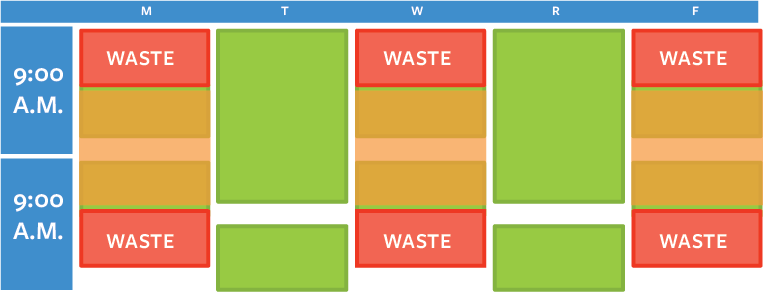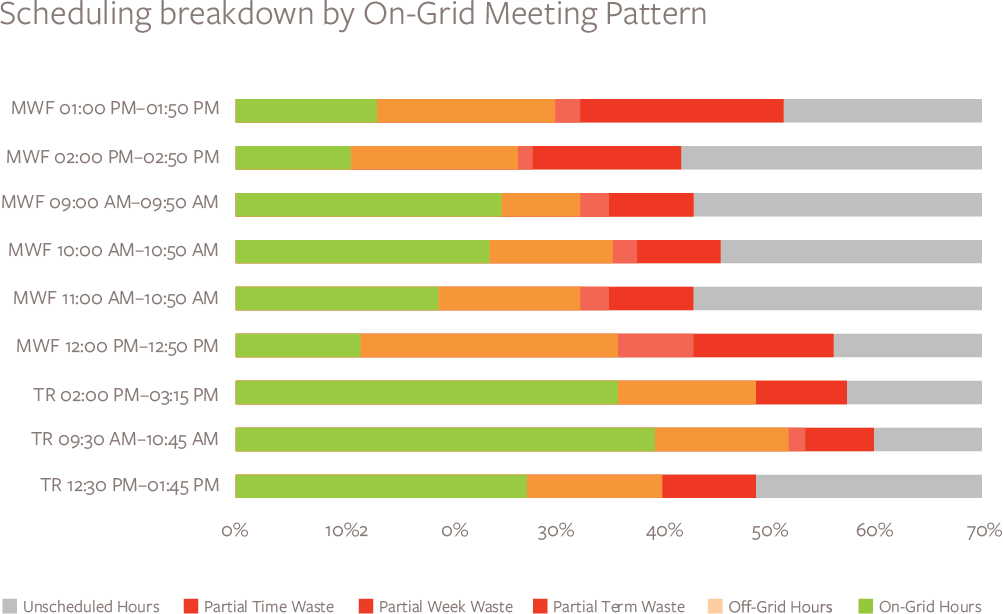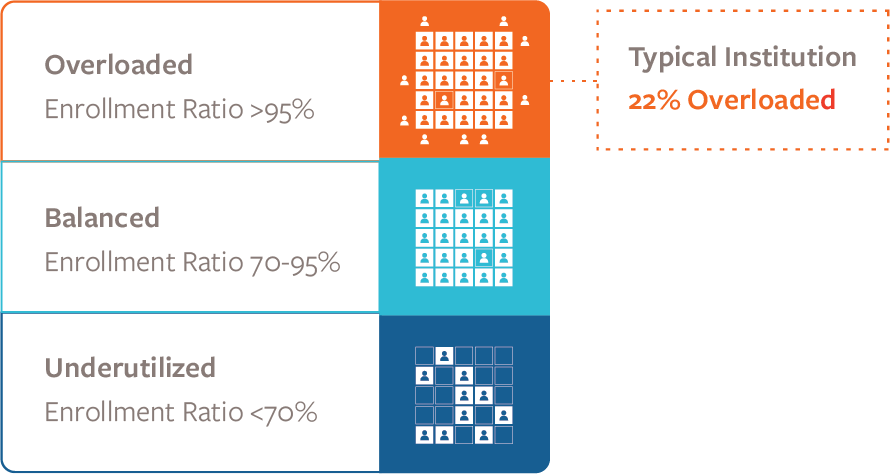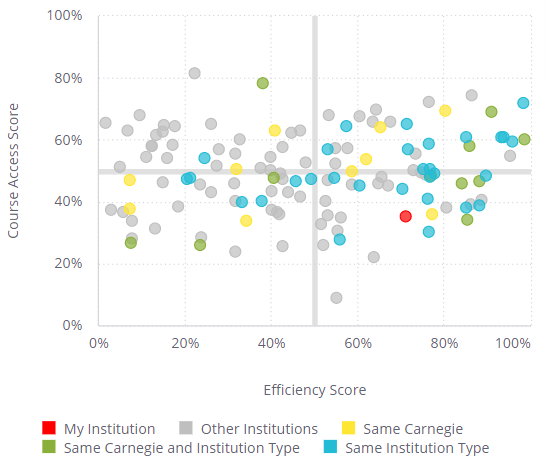NEW CONTENT
Leveraging HESI® for Better Scheduling
When it comes to measuring your scheduling efforts, data is vital to your institution's story. The Higher Education Scheduling Index (HESI®) is a benchmark of academic space utilization and course offerings that enables tracking across multiple terms. HESI metrics can help academic leaders leverage data to optimize course offerings with the goal of advancing student completions. This can improve the trajectory of on-time graduation rates and boost the use of existing space by benchmarking against other years or other institutional resources. Institutions using pathways can also benchmark against HESI® to determine if completion tracks are clear.
 Make classes more accessible by reducing primetime compression.
Make classes more accessible by reducing primetime compression.
The HESI Prime Ratio is an attempt to offer courses when students are most likely to be on campus and should fall between 45% and 67%. A value of 50% means that 5 in 10 course offerings fall inside the primetime window, as shown in the example below to be 9 AM to 2 PM.
If the Prime Ratio, the percentage of hours scheduled during primetime hours when student demand is highest, exceeds a set percentage, post-traditional students won’t have access to the courses they need. Consider student demographics to maintain a balance inside and outside of the primetime window.

Improve schedule efficiency by addressing off-grid waste.
If students are unable to get the courses they need, when they need them, then they may have to delay their graduation by a semester or longer. Avoid placing roadblocks on students by minimizing off-grid waste, the percentage of capacity wasted by scheduling sections on non-standard meeting patterns.

The HESI Meeting Pattern Analysis dashboard can provide further insight into off-grid waste. Examine courses not adhering to the meeting pattern grid and enact scheduling policy/guidelines to discourage off-grid scheduling. When an institution reduces their off-grid waste in the schedule, their institution will tend to see increases in the enrollment ratio, as the same number of students can take more courses.

Meet student demand by balancing overloaded courses.
High enrollment ratios (over 85%) make it difficult for students to register, which could impact student retention in the short- and long-term. Leverage enrollment ratio data to highlight first-year overloaded courses and look for opportunities to shift resources from low-demand courses to high-demand in the same subject areas and determine if there’s justification for additional sections.

Optimize resources by identifying underutilized courses.
On the flip side, if course offerings are underutilized (below 70% capacity at enrollment date), institutions may not be optimizing their scarce resources of facilities and faculty to meet student needs. If an institution offers a course that is in low demand, it often comes at the expense of offering another course that would better align with student needs. Consider underutilized courses and reduction candidates for reallocation opportunities.

Benchmark your metrics across other institutions
The HESI provides a continuous improvement process designed to help your institution benchmark data points among similar units from comparable colleges and universities. Each of the metrics above and more are calculated to plot your institution and provide paths of recommendations to improve. By measuring this data together, you can improve your enrollment ratio, retention, time-to-completion, and graduation rates to help college or university move forward.


Determining the effectiveness of your schedule is a surprisingly difficult question.”
– John Hamman, Chief Analytics & Insights Officer, Montgomery College
About HESI®
The Higher Education Scheduling Index tracks 50 variables related to course scheduling patterns and institutional activity of higher education. The index provides meaningful insights from one data source for improvement in course offering alignment, class fill rates, meeting patterns, and space utilization.
About Ad Astra
Ad Astra is the trusted partner of colleges and universities committed to graduating more students faster. Through data-informed planning and course scheduling, we empower institutions to remove barriers to completion while also ensuring financial sustainability.







.png?width=84&height=81&name=search%20(1).png)






